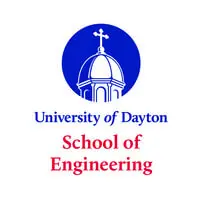About

The Society's Vision & Mission
MISSION STATEMENT
The Society of Cost Engineers is dedicated to advancing the discipline of cost engineering through standardization, education and certification. Focusing on the day-to-day practitioner, we empower our members with the knowledge, skills and resources to deliver accurate, efficient and value-driven solutions that support excellence and project success across all industries worldwide.
VISION STATEMENT
To be the global leader in cost engineering, driving transformative practices utilized by the growing number of professionals in the workspace, that shape the future of project performance and inspire a community of professionals committed to precision, collaboration and strategic insight.
MORE DETAILS
The Society of Cost Engineers, LLC is a professional organization for Cost Engineers. The Society has been designed to promote and assist the discipline of Cost Engineering through standardization, education, and certification. The Society of Cost Engineers, LLC is intended to be a member-driven organization. The membership has the ability to help define the course of the organization through the open exchange with the leadership via the forums, comments, and contact us links.
The Society of Cost Engineers, LLC attempts to promote both individuals and the Cost Engineering discipline by posting resumes as well as job openings.
The Society of Cost Engineers, LLC, while being unbiased, will continue to work with industry leads to ensure that it stays relevant, up to date, and able to identify the best costing tools available in the market or self-made to make it possible to identify what is the best solution for each enterprise. We will continue to work with these leaders to provide benefits to our members in the form of discounts, training, expert advice examples, etc.
The GOAL of the Society of Cost Engineers, LLC is to standardize cost engineering terms, procedures, and certification and to deploy the cost transparency culture around the world.
What is Should Costing?
Should Costing is the practice of determining the "SHOULD COST" of a product, component, or service prior to issuing a Request for Quote. Should Costing is similar and relies on some of the same principles of the typical Cost Estimating, but is entirely different.
Should Costing is an attempt to predict the cost/price of your supplier based on Best-in-class processes. Once you have this established, you then use Fact-Based Negotiations for your purchased components, assemblies, or services.

Cost Cafe
The Cost Café is now open!
Grab a drink, take a 15-minute break (or maybe an hour), relax, and join us at the Cost Café. We are starting a new series for cost professionals everywhere. Discussing, debating, and enjoying all things cost engineering. For updates, become a free member on the Society of Cost Engineers website, and follow the Society of Cost Engineers on LinkedIn for updates.
To watch previous episodes, become a premium member and unlock other content.
Introduction to Hypernomics and Hyernomica
On November 21, 2024, at 0900 PT, Doug Howarth will present a webinar featuring Hypernomics and their flagship software program, HypernomicaTM.
Hypernomics is an advanced economic modeling system that expands on traditional supply and demand concepts by incorporating multi-dimensional data to reveal deeper insights into market dynamics and value creation. Unlike standard economics, which typically focuses on two-dimensional supply and demand curves, Hypernomics analyzes multiple variables simultaneously—such as price, demand, value, costs, and more—allowing for a richer, more complex understanding of economic systems.
Blog
Cost Estimation Has Outgrown Excel
When the Tool You Know Becomes the Risk You Don’t See
At some point, GovCons and government agencies face a hard truth: spreadsheets may be doing more harm than good.
Excel has long been the familiar fallback for cost estimation. It’s everywhere, and it works…until it doesn’t. And when it breaks down, it rarely does so loudly. It slips. It misses. It obscures.
A cost estimate can determine a project's viability, the proposal's accuracy, or the result of a government audit. Small slips in these situations can become expensive. And avoidable.
The Quiet Chaos Behind the Spreadsheet
At first glance, a spreadsheet looks clean. But under the surface, it’s often a patchwork of personal logic, outdated assumptions, and hidden links. Each file is its own custom-built world, understood only by its creator.
Handing that off? Nearly impossible. Repeating it? A guessing game. Auditing it? Good luck.
What’s missing is trust. You can’t scale a process you can’t explain. You can’t defend a number you can’t trace. And yet, teams continue to build mission-critical estimates on tools that weren’t designed for the job.
Risk Doesn’t Always Announce Itself
The most dangerous thing about Excel isn’t the error you catch, it’s the one you don’t.
A formula misfires. A cell gets overwritten. A version gets saved under the wrong name. And suddenly, the estimate you’ve built your case around is off. Maybe by a little. Maybe by millions.
With cost estimating software, calculation logic is locked and validated. Assumptions are visible and traceable. Audit trails are automatic. It’s like showing your work in math class, only you want someone to check it this time. You can trust the number and the process that got you there.
Not All Models Are Created Equal
Let’s say you’re estimating costs for a new aircraft component or a complex IT program. Are you really starting from zero? In Excel, probably. In cost estimating software, definitely not. Cost estimating software comes equipped with historical benchmarks, parametric models, and repeatable logic tailored to industries like aerospace, defense, and software.
That means you’re not reinventing the wheel. You’re leveraging data and methodology proven across similar efforts. When inputs are thin or the scope keeps shifting, historical context can fill the gaps.
Questions Excel Can’t Answer
Cost estimation should help answer questions, not just compute totals. What if we change scope? What if we delay six months? What happens if labor costs rise? What if tariffs are put in place?
Excel isn’t designed for questions like these. Scenario planning becomes an exercise in duplication, rework, and fragile formulas. Risk modeling is manual, if it’s done at all.
Proven cost estimation software invites questions and informs decisions. Adjust a variable. Test a scenario. Model uncertainty. It’s all built in. That kind of flexibility turns cost estimation into what it should be: a strategic tool, not a static task.
The View from the Top
Executives want to understand what’s driving cost, how confident the estimate is, and where tradeoffs exist.
Excel struggles to deliver that. Reports are cobbled together. Visuals fall flat. The logic behind the numbers stays buried.
Cost estimating software provides visibility. With dashboards, breakdowns, and explicit assumptions, executives can understand what it means and how it impacts budget, profitability, and risk.
When Effort Doesn’t Equal Impact
Ironically, the more time a team spends inside spreadsheets, the less value they create. Manual entry, copy-paste workflows, and version juggling all add up. And none of it makes the estimate better.
The right cost estimation software shifts that equation. It reduces low-value effort and increases high-value analysis. Instead of fighting the tool, you’re using it to focus on better planning, smarter tradeoffs, and more transparent communication.
A Tool That’s Reached Its Limits
Excel earned its place by being versatile and ubiquitous. But cost estimation can’t afford to be patched together. The demands are too high, the risks too real, and the expectations too great.
It’s time to graduate from spreadsheets. Not because they’ve failed, but because you’ve outgrown them.
Provided by our sponsor Unison

Join Our Employer Network
Get in front of employers looking to hire Cost Engineers like you. Simply sign up for our Membership Programs, and your résumé will be given to our professional network.









![DurhamUniversityMasterLogo_RGB[9754]](https://societyofcostengineers.com/wp-content/uploads/2023/12/DurhamUniversityMasterLogo_RGB9754.jpg)


